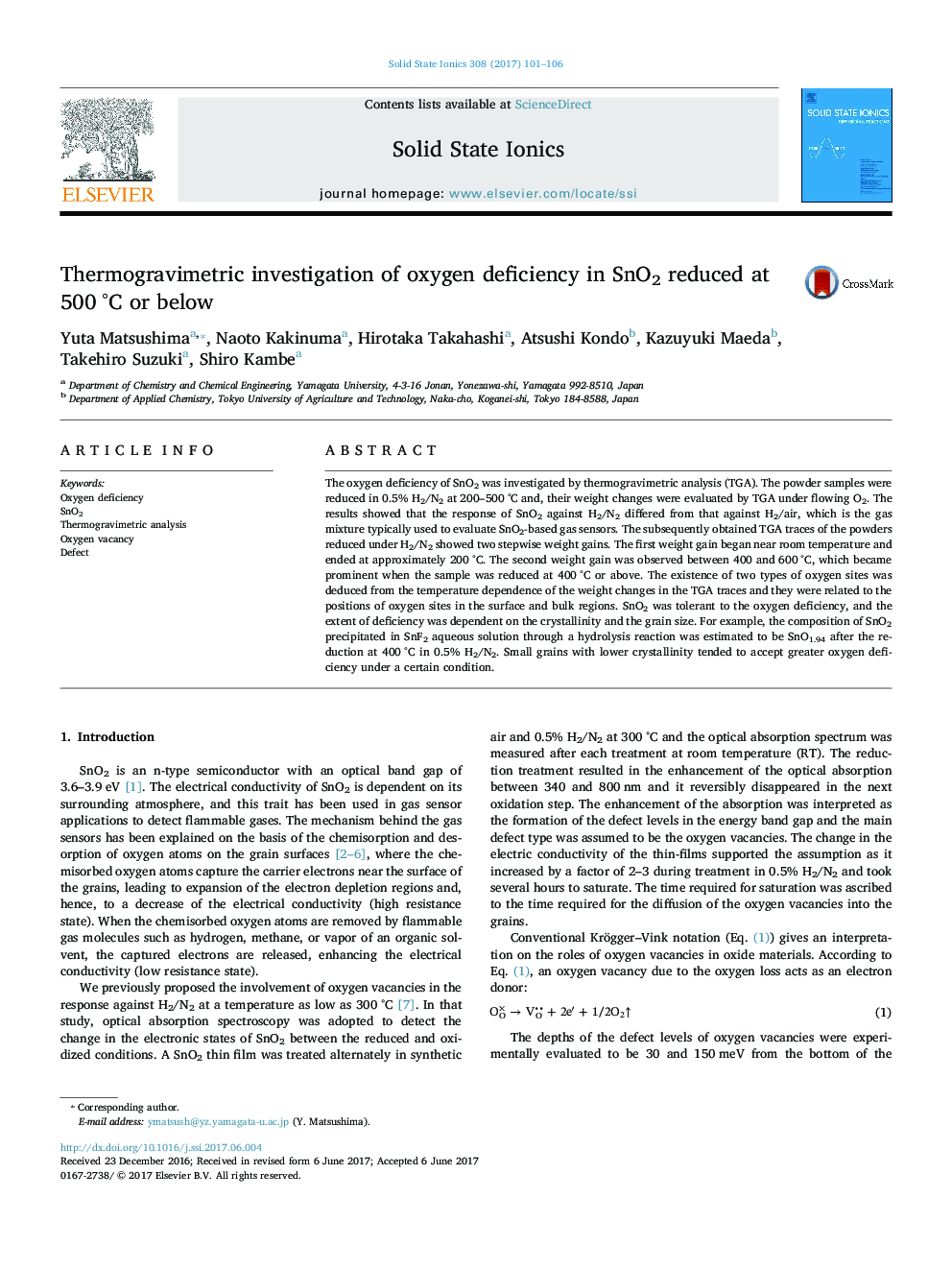| Article ID | Journal | Published Year | Pages | File Type |
|---|---|---|---|---|
| 5150408 | Solid State Ionics | 2017 | 6 Pages |
Abstract
The oxygen deficiency of SnO2 was investigated by thermogravimetric analysis (TGA). The powder samples were reduced in 0.5% H2/N2 at 200-500 °C and, their weight changes were evaluated by TGA under flowing O2. The results showed that the response of SnO2 against H2/N2 differed from that against H2/air, which is the gas mixture typically used to evaluate SnO2-based gas sensors. The subsequently obtained TGA traces of the powders reduced under H2/N2 showed two stepwise weight gains. The first weight gain began near room temperature and ended at approximately 200 °C. The second weight gain was observed between 400 and 600 °C, which became prominent when the sample was reduced at 400 °C or above. The existence of two types of oxygen sites was deduced from the temperature dependence of the weight changes in the TGA traces and they were related to the positions of oxygen sites in the surface and bulk regions. SnO2 was tolerant to the oxygen deficiency, and the extent of deficiency was dependent on the crystallinity and the grain size. For example, the composition of SnO2 precipitated in SnF2 aqueous solution through a hydrolysis reaction was estimated to be SnO1.94 after the reduction at 400 °C in 0.5% H2/N2. Small grains with lower crystallinity tended to accept greater oxygen deficiency under a certain condition.
Related Topics
Physical Sciences and Engineering
Chemistry
Electrochemistry
Authors
Yuta Matsushima, Naoto Kakinuma, Hirotaka Takahashi, Atsushi Kondo, Kazuyuki Maeda, Takehiro Suzuki, Shiro Kambe,
